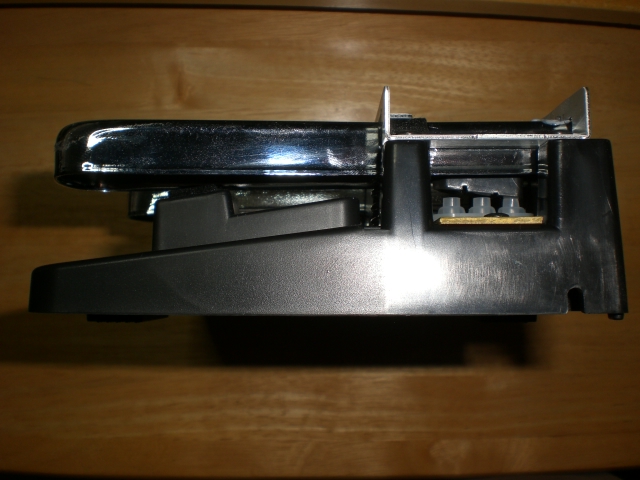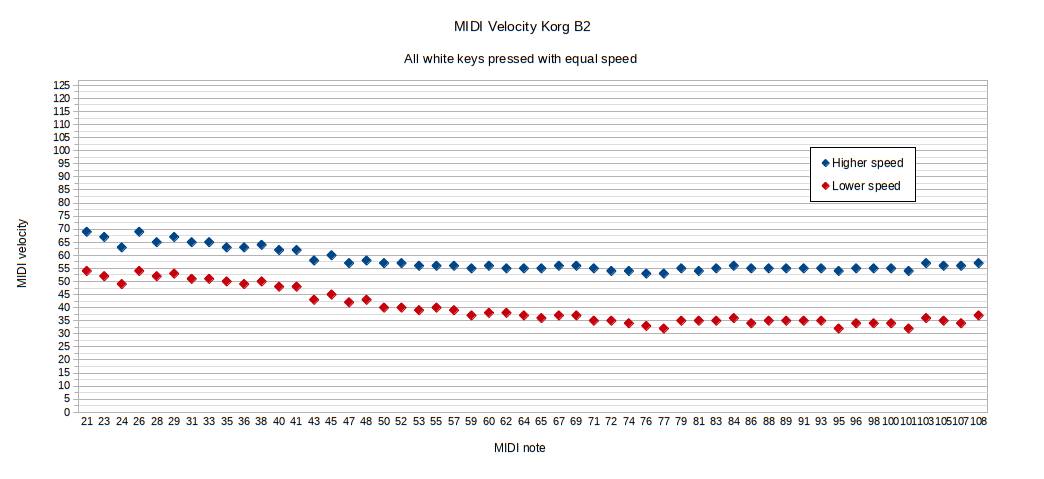Topic: Korg B2
Hello everybody,
first I thought I have to return my new Korg B2.
But then it turned out to be just an external problem. The USB cable between the B2 and my Laptop was too long. With a shorter 1.5 m cable instead of 3 m the strange resets on my USB bus and my Audiointerface (Focusrite 2i2 gen2) disappeared.
So I can loose a few words about that Digital Piano.
Most DP actions - even modern - feel sluggish to me, especially at faster tempi or chords. The B2 has a slightly lighter and quicker responding action - after my hand injury a welcome feature. It is still a graded hammer action.
With under 400 EUR and its new USB MIDI interface I decided to give it a try as my Pianoteq controller. Under Linux the B2 MIDI is instantly detected and usable. As with every other MIDI keyboard I will have to design an individual velocity curve (this is crucial!!!).
I like the radical design of the Korg B2. No fake let-off, no fake ebony, no fake ivory, no leds other than Power, ahhhh. A simply molded "Pivot", similar to the Yamaha GHS action, but much longer. This construction stabilizes the keys very effectively. And it is the quietest action I ever heard. Having semi-open headphones and neighbours this is nice to have.
Reduced-to-the-max it weighs just 11,4 kg.
An interesting feature for some of us Pianoteq users could be the also integrated USB Audiointerface in the B2!
Pianoteq can output USB Audio directly to the B2 and its internal speakers. Under Linux it works out of the box and the detected Korg Audiointerface has 24bit/48kHz. It seems to have a very good latency in a quick test. Even without using jackd I could drive it with "64 samples (1.3 ms)" directly to alsa.
Potentially nice for SoC-Platforms like Raspberry Pi having the dual USB-MIDI and -Audio already in the slab.
The only MIDI function of the Korg B2 I'm using at the moment is "Local off"
Cheers

